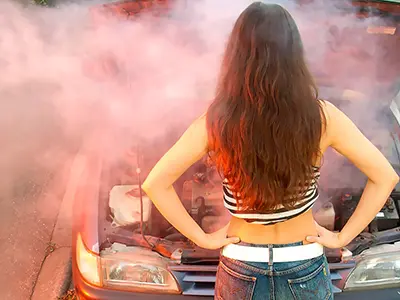
In hot weather, a car engine is subjected to serious thermal loads, and not only the comfort of the ride, but also the service life of the power unit depends on how well the cooling system works and how carefully the owner operates the car in such conditions, because unlike mild spring weather, when the temperature regime is maintained without much effort, summer heat combined with intensive operation and increased load can lead to overheating, which is an excess of the engine operating temperature above the maximum permissible value specified by the manufacturer. For each engine, this indicator is individual, but in most cases it is in the range from 85 to 105 degrees Celsius, while due to the tightness of the cooling system, the antifreeze boils at a temperature exceeding the usual water threshold of one hundred degrees, which allows for effective heat removal in difficult conditions, but if the liquid circulation is disrupted or under extreme load, the system can no longer cope, and then overheating begins, which can lead to deformation of the cylinder head, damage to the cylinder walls and pistons, loss of elasticity of the piston rings, and in severe cases to the need for expensive major repairs.
Overheating can be determined by a number of characteristic signs, and first of all, this is the deviation of the temperature sensor arrow beyond the optimal zone, be it a scale with digital divisions or a color sector, as well as the lighting of the overheating control lamp, installed in some models instead of a thermometer. At low speeds, you may notice steam rising from under the hood, which occurs when the valve in the radiator cap or expansion tank opens to release excess pressure, and hot air escapes, and sometimes overheating is accompanied by a characteristic smell of antifreeze penetrating into the cabin, which is associated with a partial exit of liquid through the valve. In addition, an overheated engine may lose power, run intermittently or respond to gas with a delay, and in such cases, you should immediately pay attention to the instrument readings to prevent the situation from worsening.
There are many causes of overheating, and some of the most common include low coolant levels, which can be caused by a leak or evaporation; a thermostat that is stuck in a position where coolant does not reach the radiator and is not cooled properly; a radiator fan that is failing due to a faulty motor, wiring, or a blown fuse; and external contamination of the radiator, where the honeycomb becomes clogged with cottonwood fluff, insects, and small debris, especially if the engine radiator is located in a tight package with the air conditioning and transmission heat exchangers. Old cars often have internal clogging of the cooling system channels with scale deposits and decomposition products of low-quality antifreeze, which worsens heat exchange, and in rare cases, the cause of overheating may be a pump failure caused by wear or a broken drive belt.
If overheating does occur, you must act carefully and consistently, without opening the radiator cap or tank on a hot engine to avoid burns, and if you need to top up the liquid, cover the plug with a thick cloth and unscrew it slowly, without exposing your face and hands. You should not stop the engine immediately, it is better to drop the load, leave it to idle for about a minute, and if the temperature does not decrease, then turn off the engine. It will be useful to turn on the heater at maximum power, which will allow some of the heat to be removed into the cabin, as well as use engine braking when driving with the gear engaged without gas supply, which will reduce the thermal load. After the initial measures, it is important to contact a car mechanic to clarify whether you can continue driving or whether the car will need to be towed, because overheating is not a problem that can be ignored, and timely action can save the engine from serious damage and the owner from major expenses.

